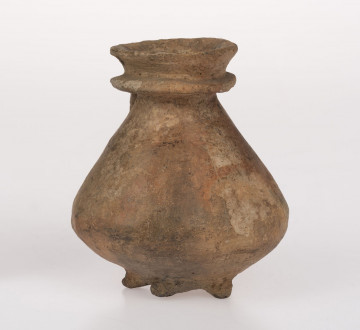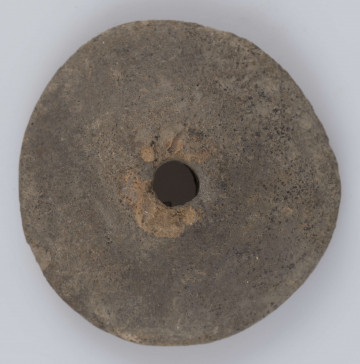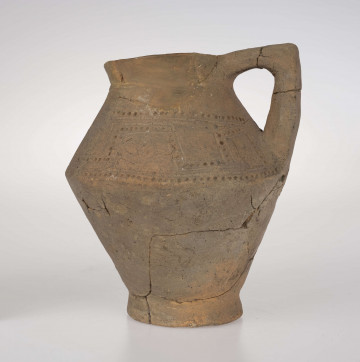
Large bottle with a flange
National Museum in Lublin
Part of the collection: Archaeological monuments of the Lublin region
The presented relic was discovered over half a century ago, in 1959. During the construction of a road in the village of Stara Wieś in the Łęczyń poviat, two clay vessels were found, i.e. an amphora and a cup. Archaeologists were called in and undertook rescue research of the deteriorating object. Thanks to their work, the remains of human bones and other grave goods were registered: a stone axe, a flint arrowhead and a flint tool.
Due to its characteristic form and ornamentation, the researchers were able to associate the equipment of the discovered grave with the Funnel Beaker culture. People of this culture inhabited the area of the present-day Lublin region around 5 thousand years ago.
The described relic - a clay cup - was richly decorated by stamping patterns on its surface. As the colour of the vessel is dark, most probably it was filled with white mass to expose the ornament even more. Under the rim of the vessel there is a zigzag decoration, on the body of the vessel we can see vertical and diagonal imprints. Also, on the handle there is a stamp ornament. The ear has a very interesting form, archaeologists call the handle of the vessel made in such a way the ansa lunata ear (from Latin: lunar handle). The shape resembles the crescent moon and, according to the scientists, it was supposed to symbolise it in ancient times.
Author / creator
Dimensions
cały obiekt: height: 7,4 cm, width: 8 cm, diameter: 8 cm
Object type
dish
Technique
firing
Material
clay
Creation / finding place
Owner
The National Museum in Lublin
Identification number
Location / status

National Museum in Lublin

National Museum in Lublin

National Museum in Lublin
DISCOVER this TOPIC
National Museum in Lublin
DISCOVER this PATH
Educational path